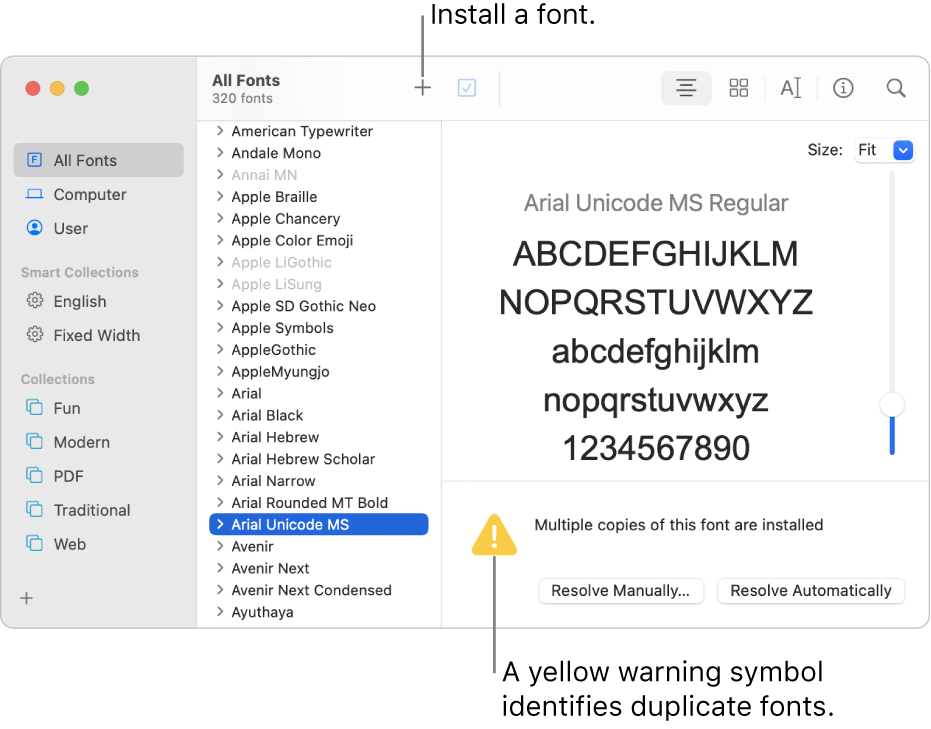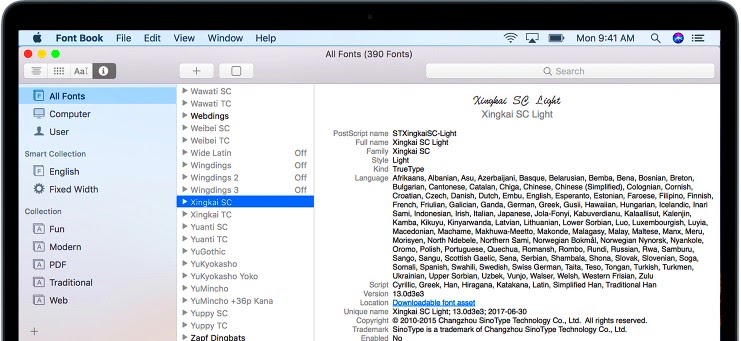
- #HOW TO INSTALL FONTS ON MAC AND USE IN WORD FOR MAC OS X#
- #HOW TO INSTALL FONTS ON MAC AND USE IN WORD MAC OS#
- #HOW TO INSTALL FONTS ON MAC AND USE IN WORD INSTALL#
- #HOW TO INSTALL FONTS ON MAC AND USE IN WORD PRO#
- #HOW TO INSTALL FONTS ON MAC AND USE IN WORD DOWNLOAD#
Since iOS 14, Apple requires all apps in which the custom fonts should be used to make use of the new APIs, no matter in which way the fonts were installed ( ). Work as an addition to the still existing possibility of installing fonts as configuration profiles. With iOS 13 Apple has introduced additional APIs for installing new systemwide available fonts ( ). Selecting a region changes the language and/or content on am the developer of the popular AnyFont app, which allows installing custom systemwide fonts in iOS as configuration profiles.
#HOW TO INSTALL FONTS ON MAC AND USE IN WORD INSTALL#
Install your fonts in the System Folder:Fonts folder by moving or copying all the font files from their individual font folders into the System Folder:Fonts folder.Each font package or collection will be in its own folder. Locate the fonts you want to install on your hard drive, or go to the location you downloaded the fonts to.If you are using ATM Light without a font management utility. use the following instructions to install the fonts:
#HOW TO INSTALL FONTS ON MAC AND USE IN WORD MAC OS#
The Mac OS can only read font files that are loose in the system font location it can’t read files inside another folder. Note: Do not move an entire folder containing fonts into the System location. If the fonts only need to be accessible to Carbon/native applications, install into the OS X native environment instead. If you want your fonts to be accessible to both Classic and Carbon/native applications, install your fonts into the Classic environment. If you are running Mac OS X, decide if you want to install fonts into both the Classic environment and the OS X native environment.
#HOW TO INSTALL FONTS ON MAC AND USE IN WORD FOR MAC OS X#
otf fonts on Mac OS 8.6 to 9.2 or Mac OS X “Classic” requires ATM Light 4.6 or later (4.6.2 for Mac OS X Classic).

If you have purchased multiple font packages, each will have its own folder. If you have purchased Adobe OpenType fonts online, they will have been decompressed to a folder on your hard drive.
#HOW TO INSTALL FONTS ON MAC AND USE IN WORD PRO#
To install your fonts using a font management utility (e.g., Extensis Suitcase, Font Reserve, FontAgent Pro or MasterJuggler), refer to that utility’s documentation for instructions on adding and activating the fonts. Fonts installed in the OS X native environment can be accessed by (a) any user or (b) just by an individual user. However, fonts installed in OS X system locations are not available to “Classic” applications (see section below). Mac OS X has native support for Type 1 and OpenType fonts, which can be installed just like other font type on OS X. The fonts are now installed and will appear in the font menus of your applications.


Note that Windows 2000 and XP do not require ATM – see separate section above. PostScript Type 1 fonts require ATM version 4.0 or higher. otf fonts require ATM version 4.1 or higher.
#HOW TO INSTALL FONTS ON MAC AND USE IN WORD DOWNLOAD#
otf fonts in Windows 98, Windows ME, or Windows NT 4, you must first install Adobe Type Manager® Light (ATM® Light), which is a free download from Adobe, and then install the fonts through ATM. In order to use PostScript Type 1 or OpenType.


 0 kommentar(er)
0 kommentar(er)
